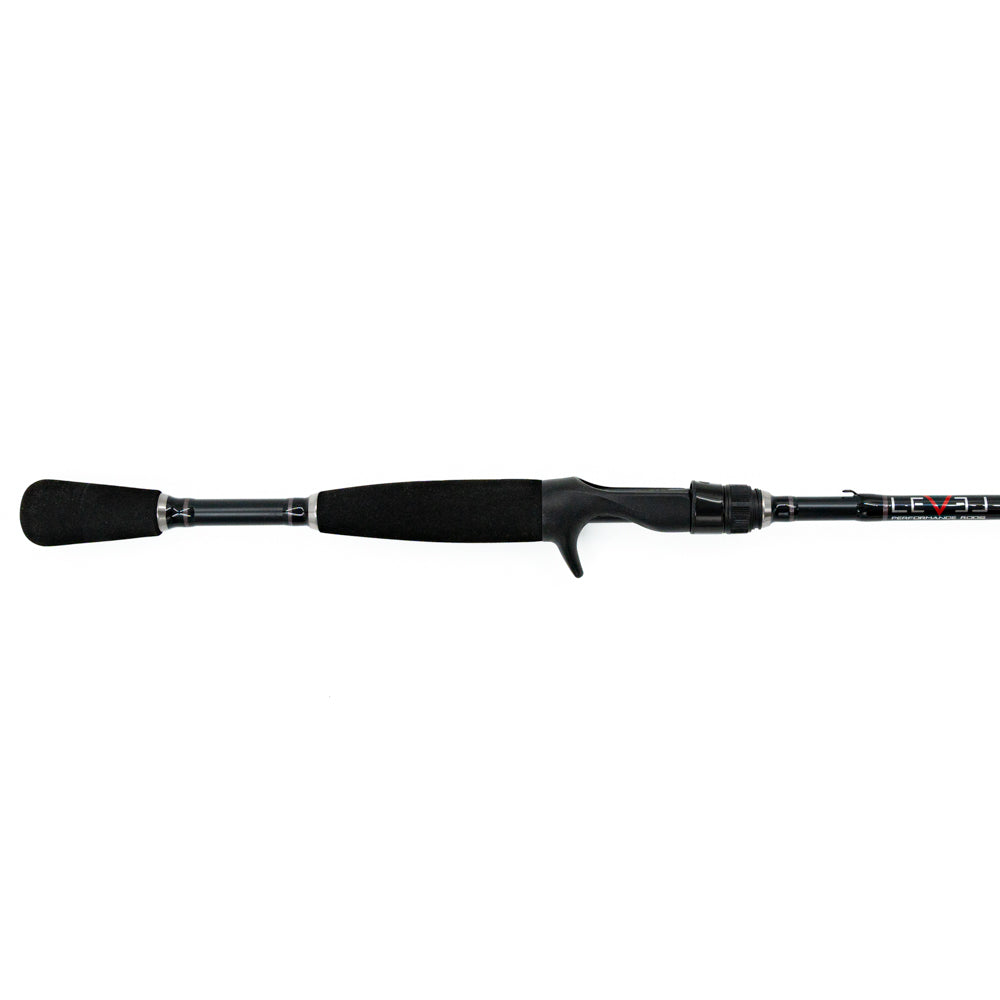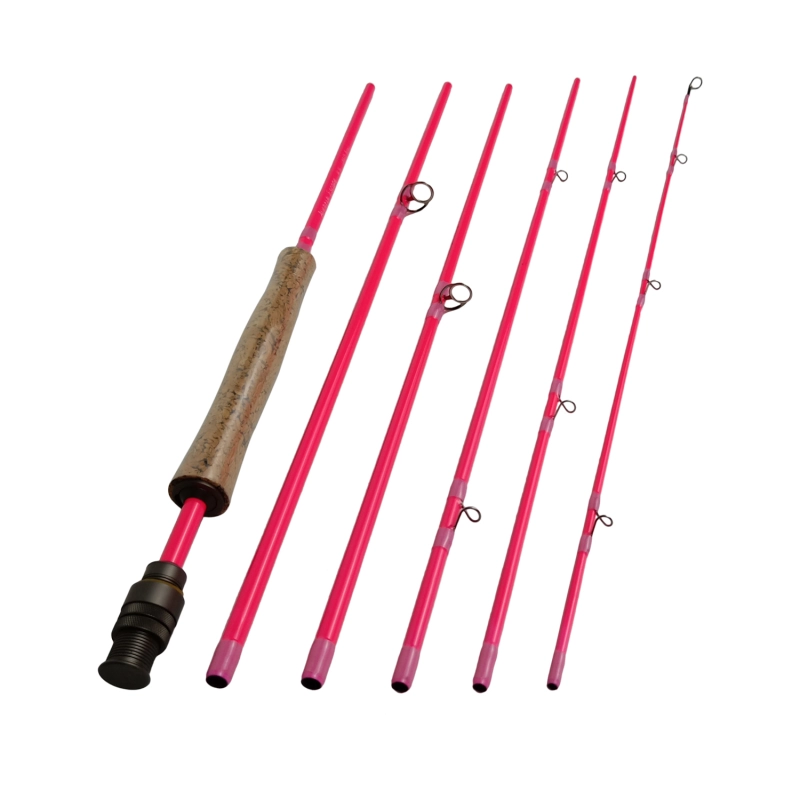Introduction to Fishing Rod Construction
How are fishing rods made? The making of a fishing rod is a detailed process. It starts with designing the most crucial part, the rod blank. Rod blanks are the core of any fishing rod. They determine the rod’s traits. Think of blanks as the skeleton of the rod. They define its strength, flexibility, and sensitivity. Craftsmen use materials like graphite for these blanks. Graphite is popular for its lightweight and strong nature.
Rod construction is not just about the rod blank though. It includes assembling various components. These parts include the handle, reel seat, and the guides. Each part plays a role in the rod’s final performance. Let’s dive into the journey of rod making. We start with the key element, the rod blank, specially focusing on graphite. We will learn how these blanks are formed. And we’ll see how they contribute to the fishing experience. Understanding these steps shows us the craft behind every cast.

The Role of Rod Blanks in Fishing Rod Design
Rod blanks are often considered the backbone of a fishing rod. They are essential in shaping the rod’s performance characteristics such as strength, flexibility, and sensitivity. The design process of fishing rods begins with a clear understanding of the intended use of the rod, as knowing the target species and fishing technique guides the selection of materials and the design of the rod blank. Rod blanks made from graphite are particularly prized for their balance of lightness and strength.
Designers must first decide the action and power needed for the specific fishing application. The action of the rod affects how it will bend when force is applied, while the power refers to the rod’s resistance to bending. These two factors are critical because they determine how well the rod will cast, how it will behave during a fight with a fish, and how sensitive it will be to bites.
The next step involves selecting the right materials. While graphite is a common choice for its high sensitivity and strength-to-weight ratio, other materials like fiberglass or composite blends might also be considered based on the design goals. Graphite rod blanks, for example, are often chosen for applications requiring finesse and precision.
Once the desired action, power, and materials are decided upon, the specific design of the rod blank can be outlined. This involves determining the taper of the rod, which is how the diameter changes from the butt to the tip, contributing to the rod’s action and sensitivity.
Ultimately, a well-designed rod blank is crucial as it not only affects the angler’s control and comfort but also the overall success of the fishing experience. The selection and design of rod blanks are precise processes that require a deep understanding of angling needs, rod materials, and the physics of fishing.
Understanding Graphite Fishing Rod Blanks
To truly grasp the essence of a fishing rod, we must delve into the heart of its construction: the rod blank. Firstly, these rod blanks, often made of graphite, are fundamental to the rod’s characteristic traits. Indeed, graphite is a favored material because it’s light yet robust. Consequently, it gives rods their strength and sensitivity.
To elaborate, graphite rod blanks start as sheets of material. Subsequently, manufacturers layer graphite fibers with other components. Through this process, they aim to achieve the right blend of flexibility and toughness. Importantly, each fiber choice and layer added affects the rod’s action, which in part defines how a rod will perform in various fishing scenarios.
Moreover, the production of these blanks is a precise science. Designers must consider the rod’s purpose from the start. Therefore, they decide the action the rod should have, as well as its ability to withstand pressure, referred to as ‘power.’ Ultimately, these choices impact how the rod will handle, cast, and how sensitive it will be to fish bites.

The Process of Creating Graphite Sheets
Graphite fishing rod blanks are key to any rod’s core attributes. To begin with, crafting these starts with designing graphite sheets. Specifically, these sheets are the basis from which the rod blank shapes up. Here’s how the process unfolds:
First, a blend of graphite and glass fibers is chosen. This blend ensures a balance between strength and flexibility. Next, the graphite and glass fibers are layered up. In addition, other specialized materials may also be added in. Therefore, each layer has a role in determining the rod’s action and feel.
After that, once layered, these materials get bonded by resin. Consequently, this resin turns the layered fibers into a solid graphite sheet, which craftsmen refer to as ‘pre-preg.’ Then, the pre-preg sheet is measured and trimmed. It’s important to note that it’s carefully cut to shape, with the cut widening at one end for the rod butt and narrowing for the tip.
Furthermore, certain areas of the pre-preg sheet are reinforced. As a result, additional materials are added to these areas to enhance durability.
Finally, each sheet is inspected during quality control. The aim here is to ensure they meet the necessary standards. Ultimately, it’s crucial for optimal performance and reliability in the final product.
In summary, making graphite sheets is a detailed, well-planned effort. Ultimately, it’s a blending of materials science and craftsmanship. Consequently, each sheet leads to a fishing rod blank that’s set to perform at its best in the water.
From Sheets to Tubes: Rolling the Graphite
Once manufacturers prepare the necessary graphite sheets, they begin the process of shaping the rod blanks. This step plays a vital role in transforming flat sheets into robust tubes that are suitable for fishing. The art of rolling these sheets into a cylindrical form is critical and significantly influences the performance of the fishing rod.
To initiate this procedure, craftsmen use a mandrel, which is a solid metal rod. Mandrels are available in various sizes, and their dimensions determine the eventual diameter and taper of the rod blank. For instance, using a larger mandrel results in a thicker rod butt, while opting for a thinner mandrel creates a more slender tip.
Wall Thickness and Its Impact on Rod Performance
Choosing the right wall thickness is crucial for a fishing rod‘s performance. Here’s how it makes a difference:
- Balance Between Weight and Strength: A thicker wall adds weight but also strength. Finding the right balance is key for the best performance.
- Impact on Stiffness: While a thicker wall may imply a more robust rod, stiffness comes from materials used, not just thickness. More graphite means stiffer but not necessarily thicker walls.
- Sensitivity: Thinner walls can make the rod more sensitive. This is important for detecting fish bites.
- Durability: The thickness must withstand stress. Durability is a must for anglers who often fish in challenging conditions.
- Cost Considerations: More layers mean more cost. High-quality rods with optimal wall thickness can be pricier.
- Precision in Manufacturing: Achieving the perfect wall thickness requires precise rolling of the graphite sheets. This impacts the casting ability and overall user experience.
The rod’s wall thickness ties back to the fundamental goal – to provide anglers with a rod that matches their fishing style and needs. Manufacturers experiment with various configurations to ensure their rods deliver on strength, weight, and sensitivity, all while balancing cost. It’s a delicate dance of engineering and craftsmanship, pivotal to the rod’s ability to outperform on the water.
Special Treatments and Enhancements
Once the graphite rod blanks have taken shape, they receive special treatments and enhancements. Each step is designed to refine the rod blank’s performance on the water. Here are those steps:
- Curing and Heat Treatment: After rolling, the blanks are heat-treated. This solidifies the resin and ensures a strong bond between the layers.
- Surface Smoothing: The blanks are sanded to create a smooth exterior. A smooth surface reduces friction with the line during casting and retrieval.
- Reinforcement Wrappings: Areas prone to high stress may get extra wrappings. These wrappings add durability without much extra weight.
- Coating with Resin: A final layer of resin is applied. This protects against water and UV damage, extending the rod’s life.
- Testing for Defects: Each rod blank undergoes testing. This ensures they meet quality standards and perform as expected.
- Applying Finishing Touches: Some blanks receive aesthetic additions like colored coatings, text, or logos.
These treatments guarantee the rod blanks are not just strong, but also reliable and visually appealing. It’s the attention to detail in every step that elevates the fishing experience. The makers tailor each process to the rods’ expected conditions and use. Anglers benefit from this meticulous care when they are out on their adventures, casting lines and reeling in catches.

The Assembly Line: Final Steps to a Finished Fishing Rod
The final journey of crafting a fishing rod unfolds on the assembly line. This is where raw blanks evolve into a fully functional fishing tool ready for the water. Here, each component undergoes meticulous installation to complete the rod’s construction. Here’s how it happens:
- Attaching the Handle: Workers fix the handle to the rod’s butt. They ensure a firm and comfortable grip for the angler.
- Securing the Reel Seat: The reel seat comes next. This holds the reel in place for casting and retrieval.
- Correct placement aids the line’s smooth flow during casting.
- This secures it to the blank and adds to the rod’s aesthetics.
- Applying Epoxy: Epoxy coats the guide wrappings and any decorative elements. This layer protects from water and wear.
- Quality Check: The finished rod undergoes a final inspection. Workers check for any defects that might impair its performance.
- Labeling and Branding: The last step involves adding the brand logo and model information. This gives the rod its final look.
Each of these steps is essential for delivering a quality product. With precision and attention to detail, manufacturers ensure that each fishing rod meets the angler’s demands. They balance the elements of design and function to provide a robust tool for the sport of fishing.
